Your tattoo machine is the most important part of your setup. Without it, you have no way to actually put ink in the skin.
As a beginner tattoo artist, a big part of improving your art is finding tattoo machines that work for you.
By the end of this article, you’ll know the different types of tattoo machines, as well as how to set up your stroke and voltage.
In this article, we’re breaking down:
Coil Tattoo Machines
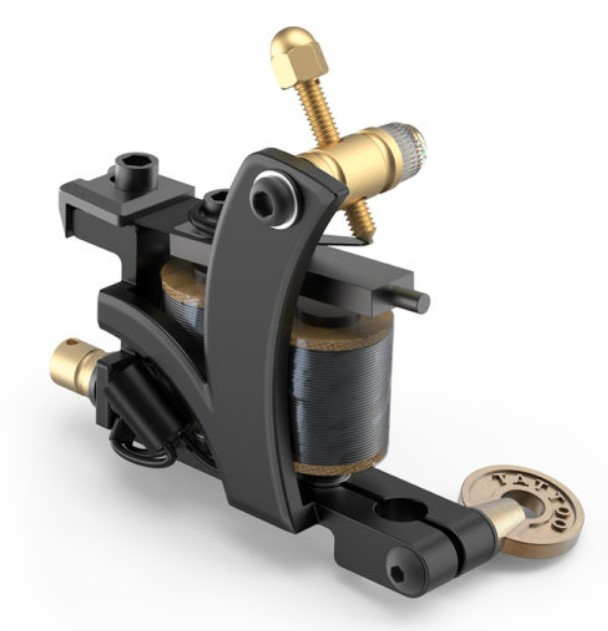
Coil machines operate by completing and breaking an electrical circuit over and over.
*Coil and rotary machines use different mechanisms. The recommended stroke length is different for a rotary machine.
Note:
Which voltage is right for you partially depends on your hand speed.
Coils are usually pieces of iron with copper wire wrapped around them. The amount of wire wrapped around a coil changes how much power it has. More wire means more electricity is being conducted from the power source. Coil machines with more wire have the power to hit harder.
The number associated with a coil tattoo machines tells you how many times the coil has been wrapped with the wire. The more times it has been wrapped, the more wire the coil has. For example, a 12-coil machine has more wire than an 8-coil machine.
Which machine you should use depends on what type of needles you plan to work with:
Rotary Tattoo Machines
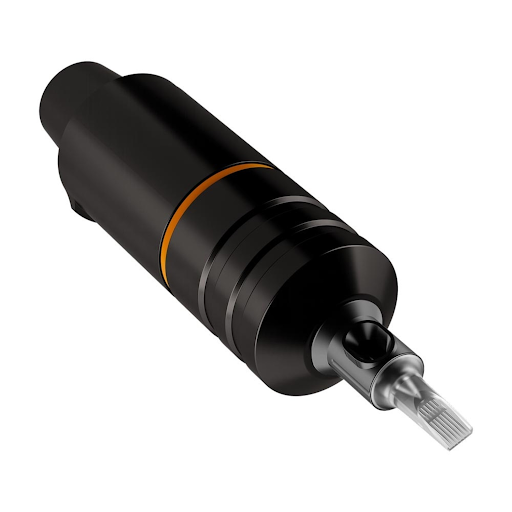
Rotary machines use a “direct drive” motor to drive the cam wheel, which moves the needle up and down as it rotates.
Note:
3.5mm stroke is usually used for packing color, but it’s also considered a good “all-rounder” stroke for a rotary tattoo machine*. You can still do some lining and shading, which is why rotaries or pen machines with a set stroke usually have a 3.5mm stroke.
*Coil and rotary machines use different mechanisms. The recommended stroke length is different for a coil machine.
Pen Machines
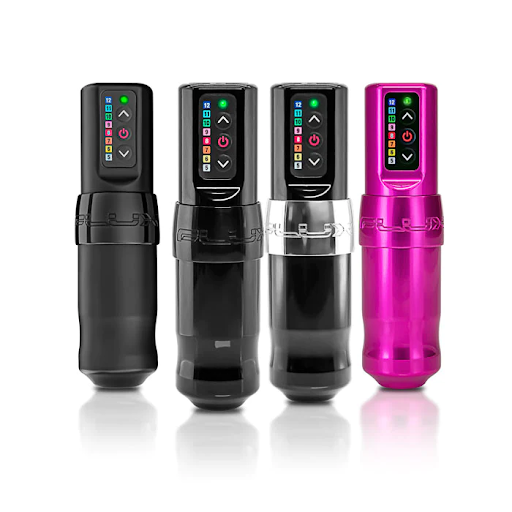
Most pen tattoo machines operate with the same “direct drive” motion of a rotary machine. However, instead of having the motor sit horizontally on top of the tattoo artist’s hand, it’s held inside the pen casing.
Note:
Pen machines cause minimal vibration and tend to be quieter than coil and rotary machines.
Pneumatic Machines
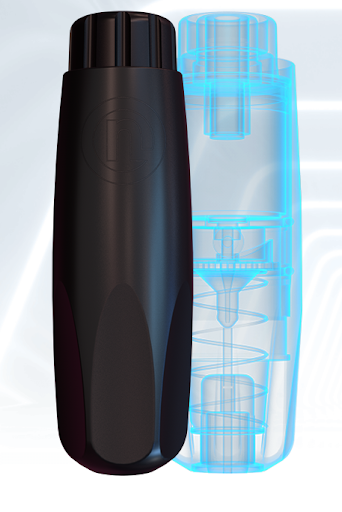
Instead of using a motor that pushes the needle down, pneumatic tattoo machines have a small air compressor. When you push down on the foot pedal, compressed air moves the needle.
Note:
Because they don’t have an electric motor, pneumatic machines tend to be lighter and quieter than other machines. They cause very little vibration and can use the same battery packs and clip cord/power source as “normal” tattoo machines. However, pneumatic tattoo machines are new to the tattoo industry and are not used as often as coil, rotary, or pen machines.
Enter your text here...You can adjust pneumatic machines similarly to pen or rotary tattoo machines that have interchangeable cams.
Prepare for a Tattooing Career with the Artist Accelerator Program
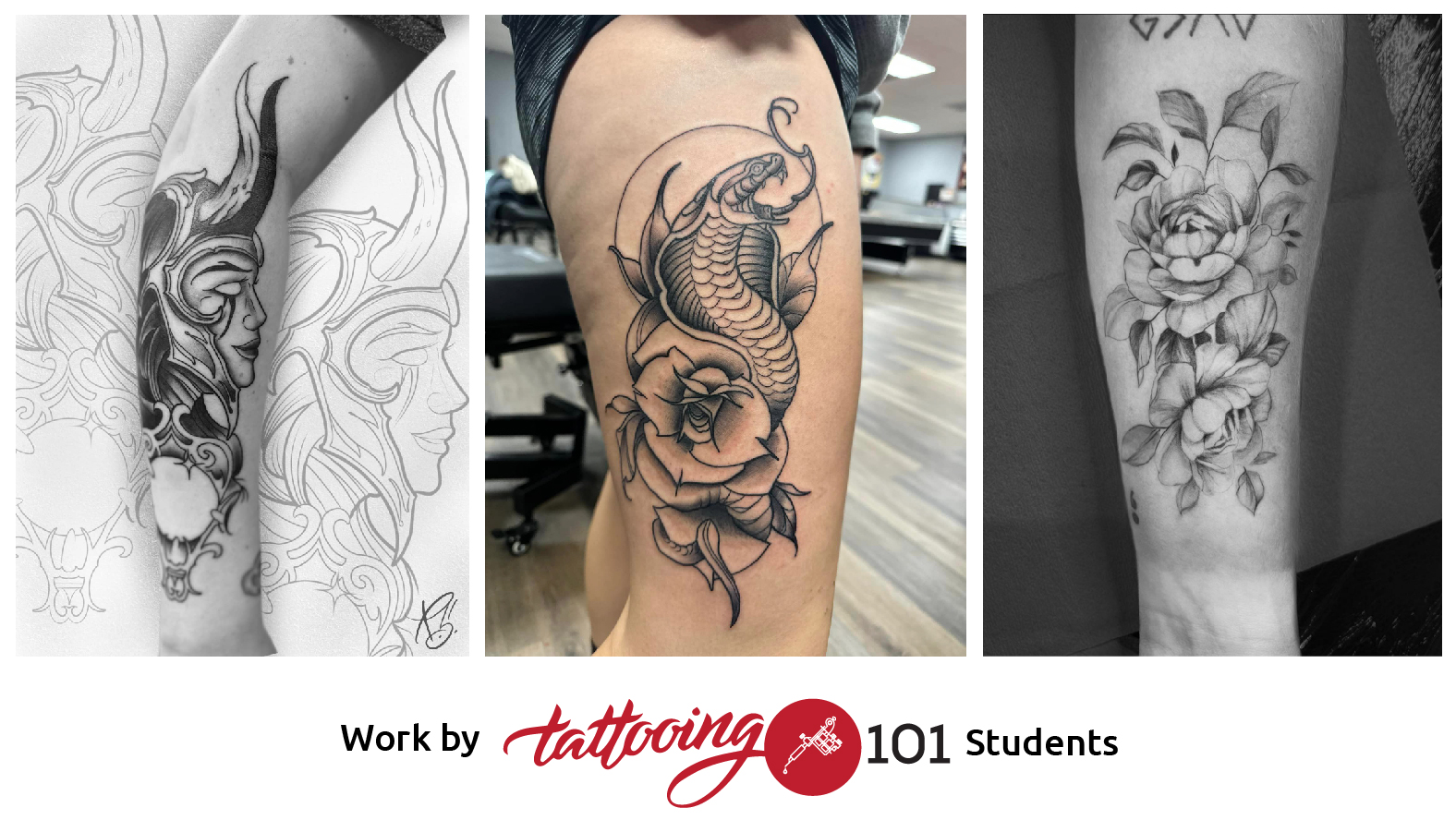
The apprenticeship process requires aspiring artists to work 50-60 hours a week without pay for 2-4 years. That, combined with the toxic culture of abusing apprentices, makes getting into the industry almost impossible for newcomers.
That’s why we created the Artist Accelerator Program. Our online course provides a simple, structured way of learning to tattoo that has been proven to work by over 2500 successful students, with many of them having gone on to open their own shops all around the world.
Inside the program, we’ll take you through every step of the tattooing process in 9 clear, easy-to-follow modules and support you along the way within the Tattooing 101 Mastermind online community.
In the Mastermind group, you’ll collaborate with other students, get answers to your questions, and receive personalized video feedback on your artwork and tattoos from professional tattoo artists. With this friendly community of both new and experienced tattoo artists, you’ll never be stuck again.
When you join the Artist Accelerator Program, you’ll have instant access to the full course and the Mastermind community, as well as our 30-Day Flash Challenge and recorded interviews with tattoo artists from all over the world.

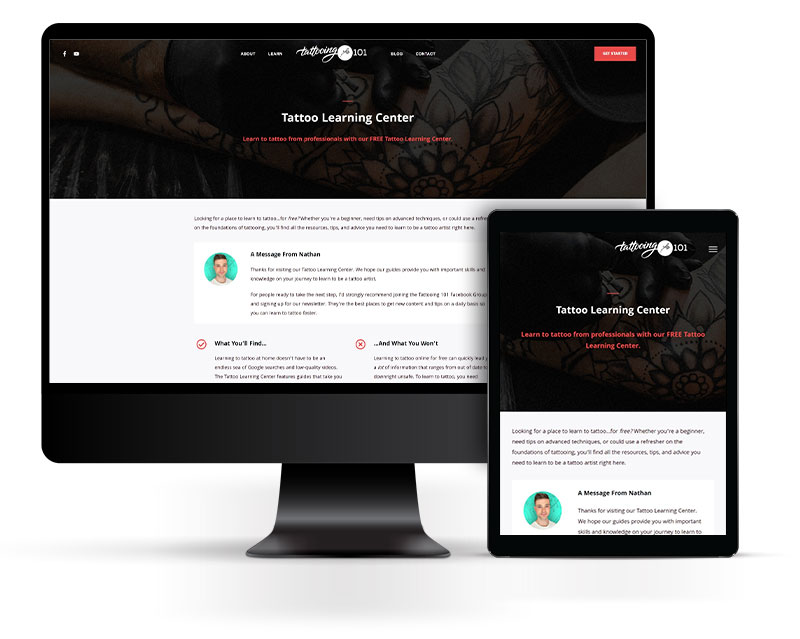

This was a great article, thanks for the info! 15 years ago I had to call my tattoo artist with each and every question I had. There was virtually no information on the internet. As a result, I ended up setting the equipment to the side and not using it because I didn’t want to chew my legs up any more. Now I’m working on fake skin again and getting decent practice thanks to you guys!